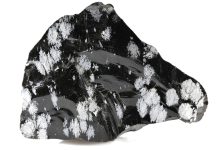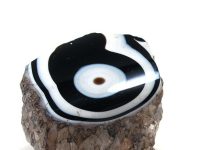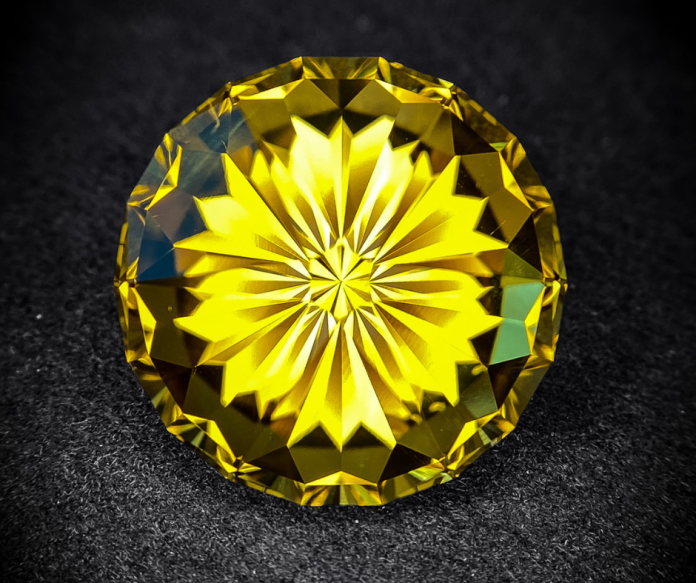
Wondering how to cut gemstones to take advantage of the light? While most of us are familiar with the phrase, “Beauty is in the eye of the beholder”, there is also a less famous quote by Franz Kafka, “Anyone who keeps the ability to see beauty never grows old.” These two statements put forth the idea that beauty is both personal and timeless.
The Impact of Light
Light is a major component of art and craft. Light is what reflects and allows us to see shape, color and the subtleties that the hand and eye created. However, the lapidary who facets (the process of turning the rough gem crystal material into a decorative gemstone) a stone has to consider light in another dimension. Light is an essential part of the medium and process, just like paint is essential to painting a portrait.
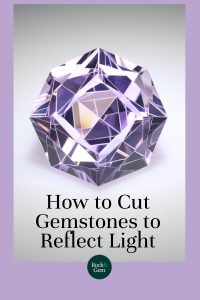
Light and the gemstone’s material are married in the creation of a jewel. Light reflects off the gemstone surface and returns to your eye like any craft or art. However, how to cut gemstones properly involves light also entering the gemstone and bouncing around, and returning from inside the gemstone. The greater quantity of light that can be captured and moved within the gemstone, the more exciting the jewel becomes. Poorly cut facet angles will allow the light to simply pass through the gemstone making a window. Correct angle facets can also be cut to break up the returning light, creating scintillation. Now, the gem sparkles! The attention given to light is a major difference between mass-produced faceted colored gemstones and performance-faceted colored gemstones cut by lapidary artists.
Learning to Work With Light
Gaining knowledge, as well as understanding and learning how to cut gemstones to apply it to faceting is complex and takes time. Like playing an instrument or learning to dance, the key element to success is practice. Through practice, artists begin to see the results of their efforts and understand the effects of subtle changes and modifications. With this knowledge and experience, a lapidary can then start to develop new and better techniques to improve a jewel’s performance.
When designing and faceting a gemstone, a designer has to consider and make decisions regarding the different performance attributes of the stone that result from various cutting techniques. These attributes include the following.
• Color depends on how to cut gemstones to enhance their natural color, resulting in a variety of saturations, hues and transparencies.
• Brightness is perceived when light enters the stone, bounces around and reflects back to the viewer’s eyes.
• Scintillation comes from different facets and their ability to create different beams of light that make a sparkling effect.
• Dispersion of light creates secondary and tertiary colors and is made by creating angles that separate the colors of the light spectrum.
• The darkness or lightness of a gemstone is determined both by how to cut gemstones using faceting angles and the depth of the cuts to darken or lighten the stone and ultimately affect the jewel’s weight.
|
Photographer: Mark Oros Material: Oro Verde Quartz Design: Oculus Size: Unknown Weight: Unknown |
Everything All at Once?
In a perfect world, artists try to maximize all of the performance attributes of a finished jewel. However, it is a balancing act because enhancing one performance aspect of a jewel means another may suffer. Making a stone lighter in color and also maximizing its weight by making it larger doesn’t necessarily work together.
The different attributes of light performance must be balanced and work together to create the best outcome for the jewel. These trade-offs are usually driven by the buyer. Lapidaries must consider the capabilities of each individual gemstone both in performance and the potential market value of the resulting design/ cut. With beauty being in the eye of the beholder, lapidary techniques must be applied to meet the eye of its new beholder (personal beauty) and the generations to come (timeless beauty).
|
Photographer: Joyce Wang Material: Electric Blue Topaz Design: Lotus Size: Unknown Weight: Unknown |
Mass Market Vs. Small Business
Gemstones are cut for different markets based on that market’s perception of value. The two major attributes of the mass market for gemstones are color and weight. This is based on years of market development along with the original sizes and shapes of available rough gemstone crystals. The lapidaries that facet these gemstones are talented, but they are restricted to creating a standard and repeatable result to meet the size and color expectations of the industry. They do not have the luxury of forfeiting the gemstone’s color or weight for better light performance.
However, movement and play-of-light is the biggest component of a jewel’s performance. Many lapidaries prefer to create gemstones where light performance takes priority over weight and color. The artists and their clients see value in this. While weight and color are still top of mind, the beauty of the finished jewel is viewed from a different perspective than the mass market. It is not only the shape, design and size of the gemstone, but also how the light will play within it to create beauty for the new owner.
|
Photographer: Jeff Mason Material: Optical Quartz (Colombia) Design: Transition Grid Size: 24mm x 24mm x 17mm Weight: 79 Cts |
How to Cut Gemstones: The Science of Light
How to cut gemstones is the result of understanding and applying the disciplines of geology, gemology, geometry, chemistry and optics. Understanding the science of light and its movement within a faceted gemstone is important to get the brightest, most sparkling and most beautiful gemstone.
Material refractive indexes, dispersion and critical angles are major components to getting the best light performance from a gemstone. Gemstone designer, Jim Perkins had a gemstone performance mission. He wanted to design gemstones that dazzled the beholder. He would create new and unique gemstone designs, but his forte was taking classic gemstone designs and maximizing their performance. He used to say that his designs were “10 percent inspiration and 90 percent perspiration,” meaning that he worked harder at the gemstone performance attributes of light return and scintillation than he did at making new geometric designs.
|
Photographer: Mark Oros Material: Citrine Design: Starman Size: Unknown Weight: Unknown |
Client Satisfaction
On a personal note, I began using Jim Perkins’ gemstone designs and started to get immediate reactions from my jewelry design and setting clients. I remember the first couple of times I brought a set of Jim’s designs faceted in quartz, amethyst, citrine and rose quartz to show my jewelry clients. They were startled. I asked them what was wrong and they all said the same thing, “I didn’t know tourmaline came in this color.” I informed them it was a quartz gemstone and they all said the same thing, “You can’t make quartz do that!” But there it was in their hands, a beautiful piece of performance-based faceted quartz using Jim Perkins’ design, born from his perspiration and affinity for bouncing the light back to the viewer.
Light performance within a jewel has always been a major component of gemstone design. Over the centuries, we have been able to use science to better understand and apply the knowledge of light performance and crystal structure to our lapidary designs and techniques. In the past 50 years, lapidary has started to look at gemstone design and fabrication differently by using increased knowledge and newly developed tools. Cutters have found a growing market willing to pay for beauty that is both innovative and performance-based.
This story about how to cut gemstones appeared in Rock & Gem magazine. Click here to subscribe. Story by Mark Oros.


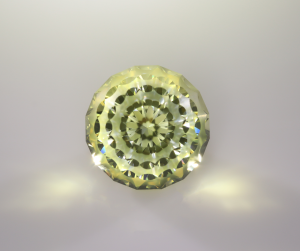 Artist: Mark Oros
Artist: Mark Oros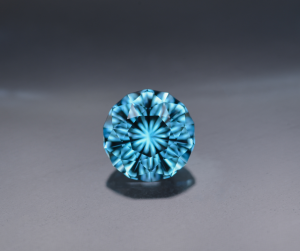 Artist: Joyce Wang
Artist: Joyce Wang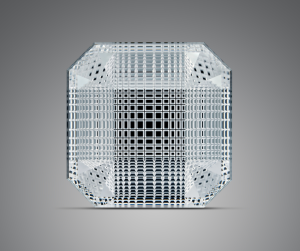 Artist: BD Drummond
Artist: BD Drummond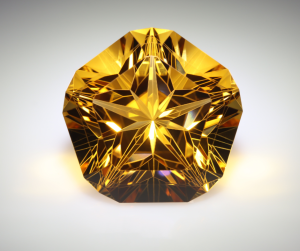 Artist: Mark Oros
Artist: Mark Oros

